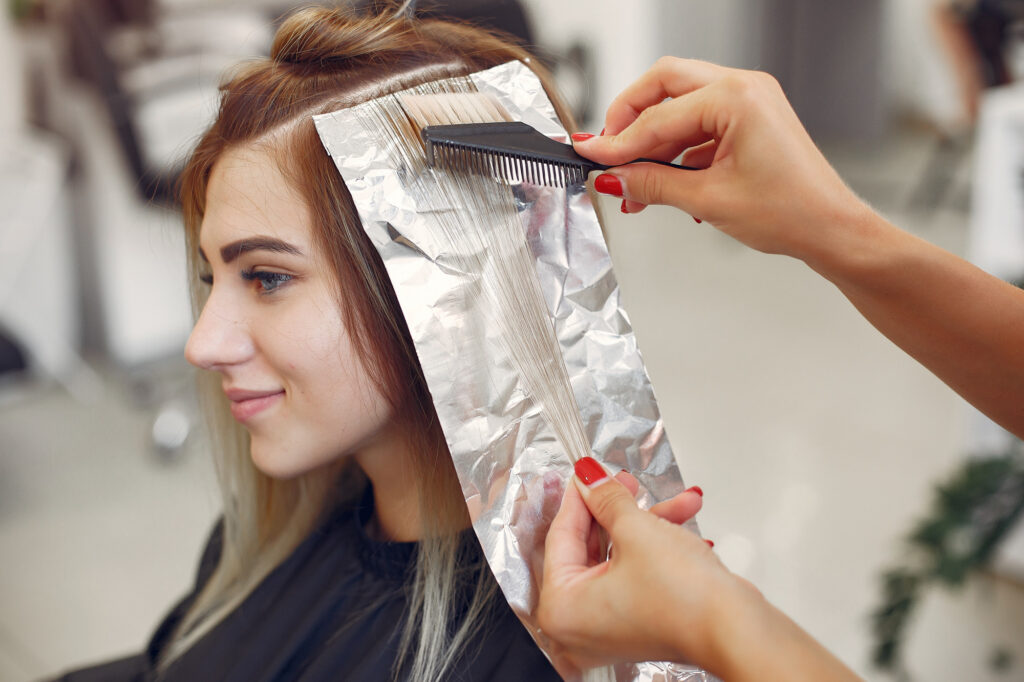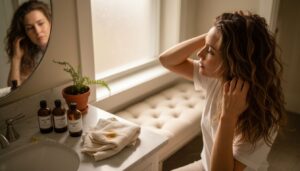Did you know the average person loses up to 100 hairs every day without even noticing? Healthy hair care starts with understanding the real condition of your strands before choosing products or styles. Whether you want shinier hair, less breakage, or better growth, it all begins with simple daily habits that make a big difference. Discover how a few science-backed steps can transform your hair’s look and feel from root to tip.
Quick Summary
| Key Point | Explanation |
|---|---|
| 1. Assess your hair health regularly | Perform a visual and tactile examination to identify signs of damage, which helps develop effective care strategies. |
| 2. Choose gentle, nourishing products | Select products with natural ingredients that hydrate and avoid harsh chemicals for optimal hair health. |
| 3. Practice protective styling techniques | Use styles that minimize environmental stress and tension to help maintain hair strength and reduce damage. |
| 4. Limit heat and chemical exposure | Reduce the use of heat tools and harsh chemical treatments to preserve your hair’s structural integrity. |
| 5. Schedule regular salon evaluations | Professional checks every 3-4 months provide insights into hair condition and help track care progress effectively. |
Table of Contents
- Step 1: Assess Your Current Hair Health
- Step 2: Choose Gentle, Nourishing Products
- Step 3: Adopt Protective Styling Habits
- Step 4: Limit Heat And Chemical Exposure
- Step 5: Verify Progress With Regular Salon Checks
Step 1: Assess your current hair health
Knowing the true condition of your hair is the first critical step in preventing damage and maintaining luxurious locks. Before diving into treatments or purchasing products, you need a clear understanding of your current hair health.
Start with a simple visual and tactile examination. Stand in front of a well-lit mirror and run your fingers through your hair. Check for signs like excessive breakage, split ends, dryness, or unusual texture changes. According to research from clinical reviews, combining visual assessment with systematic observation provides the most accurate picture of hair condition.
Next, perform a gentle wash test. After shampooing, count the number of hairs that fall during and after washing. Scientific reviews suggest tracking daily hair counts as a non-invasive method to understand potential shedding issues. Normally, losing 50-100 hairs per day is considered standard.
Pro Tip: Take close-up photographs of your hair and scalp to track changes over time. This helps create a baseline for monitoring hair health progression.
Consider examining your hair under different lighting conditions. Natural daylight reveals nuances like shine, texture, and potential damage that indoor lighting might mask. Look for signs of:
- Dullness
- Brittleness
- Uneven color
- Visible split ends
- Scalp condition
Here’s a comparison of common signs you might observe during your initial hair health assessment:
| Observation Method | What to Check For | What It Indicates |
|---|---|---|
| Visual Inspection | Split ends Dullness Uneven color |
Damage Lack of shine Color changes |
| Tactile Check | Brittle feel Rough texture |
Dryness Weak strands |
| Wash Test | Hairs lost during wash | Normal: 50-100/day Excess: Shedding issue |
| Lighting Assessment | Shine in natural light Visible scalp |
Hair vitality Thinning areas |
If you notice significant irregularities or are concerned about persistent hair issues, consulting a professional hair specialist can provide more comprehensive insights. They can use advanced techniques like dermoscopy and high-resolution imaging to assess your hair’s structural integrity more precisely.
By thoroughly assessing your hair health now, you’re setting the foundation for targeted hair care strategies that will help you achieve and maintain stunning, resilient locks.
Step 2: Choose gentle, nourishing products
Now that you understand your hair’s current condition, selecting the right products becomes crucial for maintaining its health and preventing future damage. Your goal is to find haircare solutions that cleanse, protect, and nourish without stripping away natural oils.
Start by looking for products with natural, nurturing ingredients. According to Clean Beauty Awards research, top-performing products feature ingredients like aloe vera, coconut oil, baobab oil, and jojoba oil. These natural components help cleanse your hair while providing essential moisture and strength.
Read ingredient labels carefully. Avoid products with harsh sulfates, parabens, and alcohol that can dry out and damage your hair. Instead, seek out formulations that prioritize hydration and scalp health. Look for keywords like “nourishing,” “moisture-rich,” and “botanical extracts” that signal gentler treatment.
Pro Tip: When in doubt, opt for products specifically designed for your hair type (fine, thick, curly, color-treated) to ensure optimal care.
Consider the following when making your selections:
- Ingredients that match your hair’s specific needs
- Minimal chemical processing
- Natural oil content
- Protein and peptide enrichment
- Scalp-friendly formulations
Don’t be afraid to experiment. Everyone’s hair is unique, and what works for one person might not work perfectly for another. Start with small quantities to test how your hair responds to new products. Pay attention to how your hair looks and feels after consistent use.
By carefully choosing gentle, nourishing products, you’re creating a solid foundation for protecting and enhancing your hair’s natural beauty.
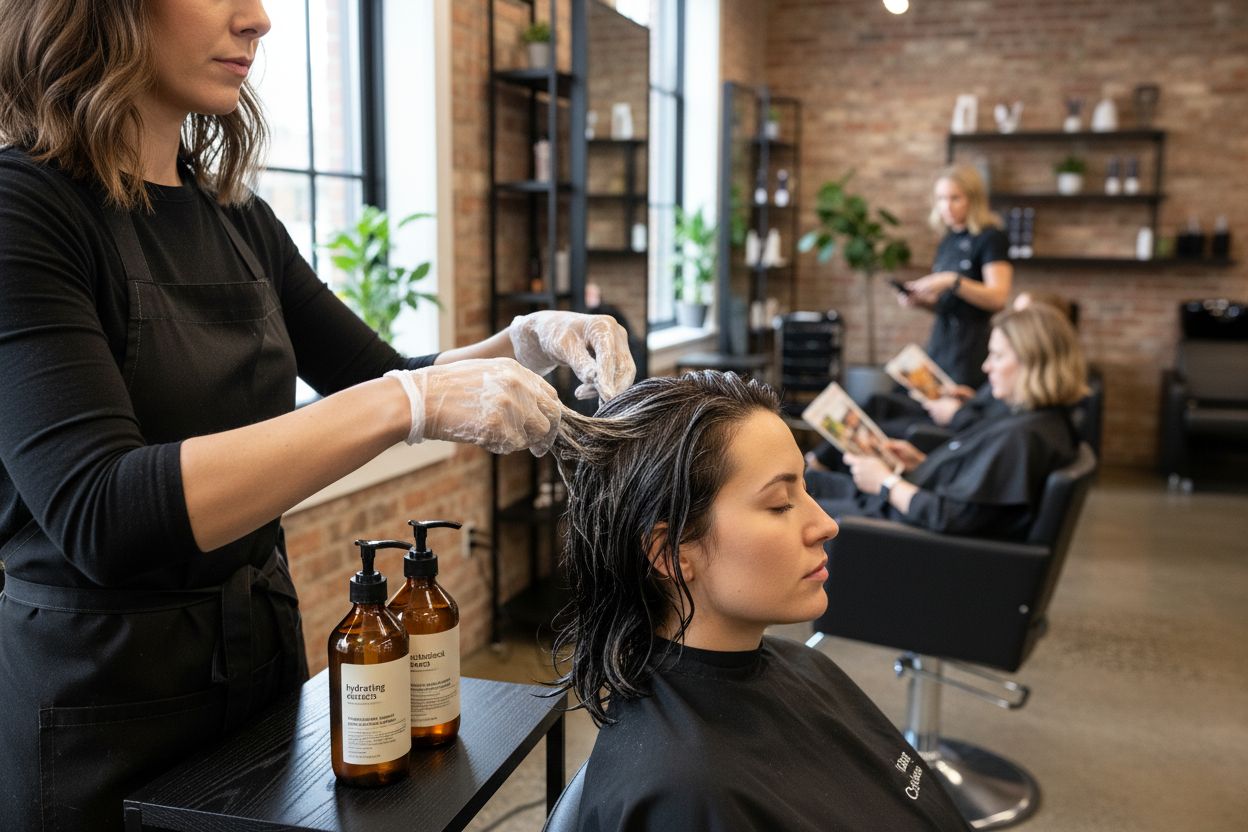 Your next step will be learning how to apply these products effectively to maximize their benefits.
Your next step will be learning how to apply these products effectively to maximize their benefits.
Step 3: Adopt protective styling habits
Protective styling isn’t just a trend its a strategic approach to maintaining healthy hair while minimizing damage. According to research on protective hairstyles, these techniques help reduce environmental stress and minimize daily manipulation that can weaken your hair strands.
Start by understanding what makes a style truly protective. Braids, twists, locs, and carefully installed wigs can shield your hair from harsh environmental factors like sun exposure, wind, and humidity. The key is creating styles that limit direct contact with external elements while reducing tension on your scalp and individual hair strands.
Preparing your hair before styling is crucial. Always begin with clean thoroughly moisturized hair. Deep condition your hair to ensure maximum hydration and strength before creating any protective style. This preparation helps your hair withstand the structural demands of braiding or twisting.
Pro Tip: Rotate your protective styles every 4 to 6 weeks to prevent excess tension and allow your natural hair to rest and recover.
When selecting and maintaining protective styles, keep these principles in mind:
- Choose styles that do not pull tightly at your hairline
- Ensure your scalp remains clean and moisturized
- Use silk or satin scarves and pillowcases to reduce friction
- Regularly check for signs of stress like scalp irritation
- Avoid keeping styles in for extended periods
Be mindful of potential risks. Styles that create excessive tension can lead to traction alopecia a form of gradual hair loss caused by pulling. Listen to your scalp and hair. If you experience pain or notice any signs of stress its time to adjust your style.
By adopting protective styling habits, you are giving your hair a strategic break from daily wear and tear.
This approach allows your hair to grow stronger and healthier while looking fantastic. Your next step will be learning how to maintain these styles to maximize their protective benefits.
Step 4: Limit heat and chemical exposure
Reducing heat and chemical damage is crucial for maintaining your hair’s long-term health and vitality. According to research on hair straightening techniques, excessive heat styling can cause irreversible structural damage to your hair strands.
Start by understanding the impact of heat tools. Flat irons, curling wands, and blow dryers can dramatically weaken your hair’s natural structure when used frequently or at high temperatures. Think of your hair like delicate fabric that gets damaged with repeated intense heat exposure.
Implement a strategic approach to heat styling. When you do use heat tools, always apply a protective spray or heat-resistant serum first. Lower the temperature setting on your styling tools and limit heat exposure to the absolute minimum. For most hair types, keeping temperatures between 300 and 375 degrees Fahrenheit provides styling effectiveness without extreme damage.
Pro Tip: Invest in a high-quality heat protectant and apply it generously before any heat styling to create a protective barrier for your hair strands.
Consider these guidelines for reducing heat and chemical stress:
- Air dry your hair whenever possible
- Use heat tools no more than 1-2 times per week
- Always use a heat protectant product
- Choose lower temperature settings
- Limit chemical treatments like bleaching and permanent coloring
For chemical treatments, be equally cautious. Repeated bleaching, relaxing, or aggressive coloring can break down your hair’s protein structure. If you choose to chemically treat your hair, space out treatments and prioritize professional applications that minimize damage.
Remember that sometimes the only true solution for severely damaged hair is cutting off the affected sections and allowing healthy regrowth. By being mindful of heat and chemical exposure now, you are preserving your hair’s natural strength and beauty.
Your commitment to reducing heat and chemical stress will pay off with healthier more resilient hair that looks stunning and feels incredible.
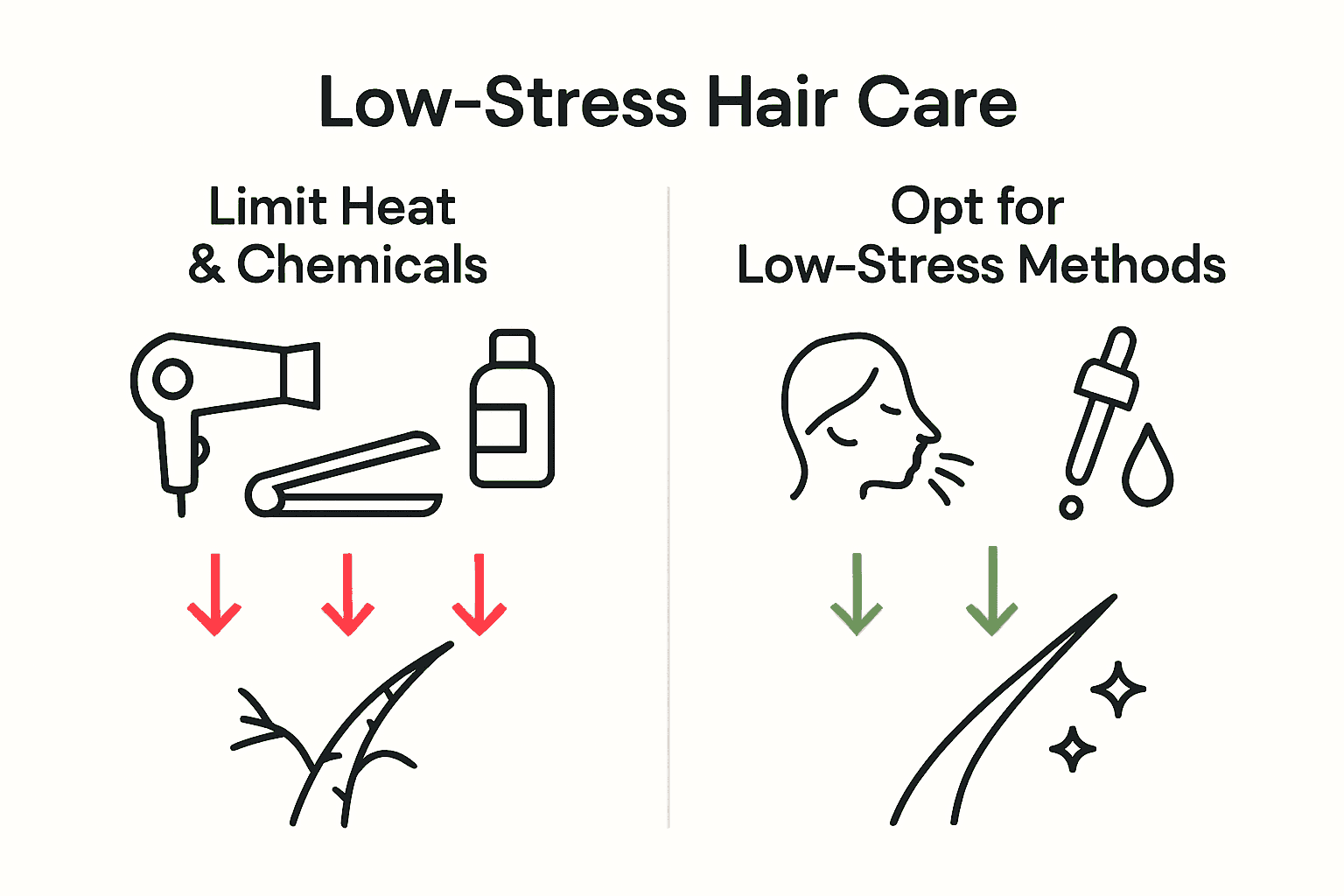
Step 5: Verify progress with regular salon checks
Consistent professional evaluation is the ultimate strategy for maintaining your hair’s health and catching potential issues early. According to clinical research on hair assessment techniques, professional salon checks provide sophisticated insights that go far beyond what you can observe at home.
Schedule professional assessments every three to four months. A skilled hair specialist can perform advanced diagnostic techniques like trichoscopy a detailed microscopic examination of your scalp and hair strands. These expert evaluations help you understand your hair’s true condition and track the effectiveness of your current hair care routine.
During your salon check prepare to discuss your hair care practices openly. Bring photos of your hair from previous appointments to help your stylist compare progress. Research recommends using calibrated scoring methods that provide objective measurements of hair growth and overall hair health.
Pro Tip: Take clear close up photos of your hair and scalp before each salon visit to create a personal progress portfolio.
What to expect during a comprehensive salon health check:
- Detailed scalp examination
- Hair strand strength assessment
- Growth rate measurement
- Moisture and protein balance analysis
- Personalized recommendations for improvement
Be receptive to professional advice. Your stylist can identify early signs of damage or potential issues that might not be immediately visible to you. They can recommend targeted treatments or adjustments to your current hair care approach based on their expert observations.
Remember that professional checks are not just about identifying problems they are proactive opportunities to optimize your hair health. By investing in regular salon assessments you are taking a sophisticated approach to hair care that goes beyond basic maintenance.
Your commitment to professional monitoring will ensure your hair remains vibrant healthy and stunning throughout every season.
Bring Your Hair Health Journey to Joel C Ma Hair Studio
Are you ready to stop struggling with split ends, dullness, and brittle hair? Our article on preventing hair damage revealed that personalized treatments, gentle products, and regular professional assessments make all the difference. Yet, turning this knowledge into results takes true expertise and attentive care. At Joel C Ma Hair Studio, we understand how overwhelming it can feel to navigate hair care routines, and we are here to simplify your journey.
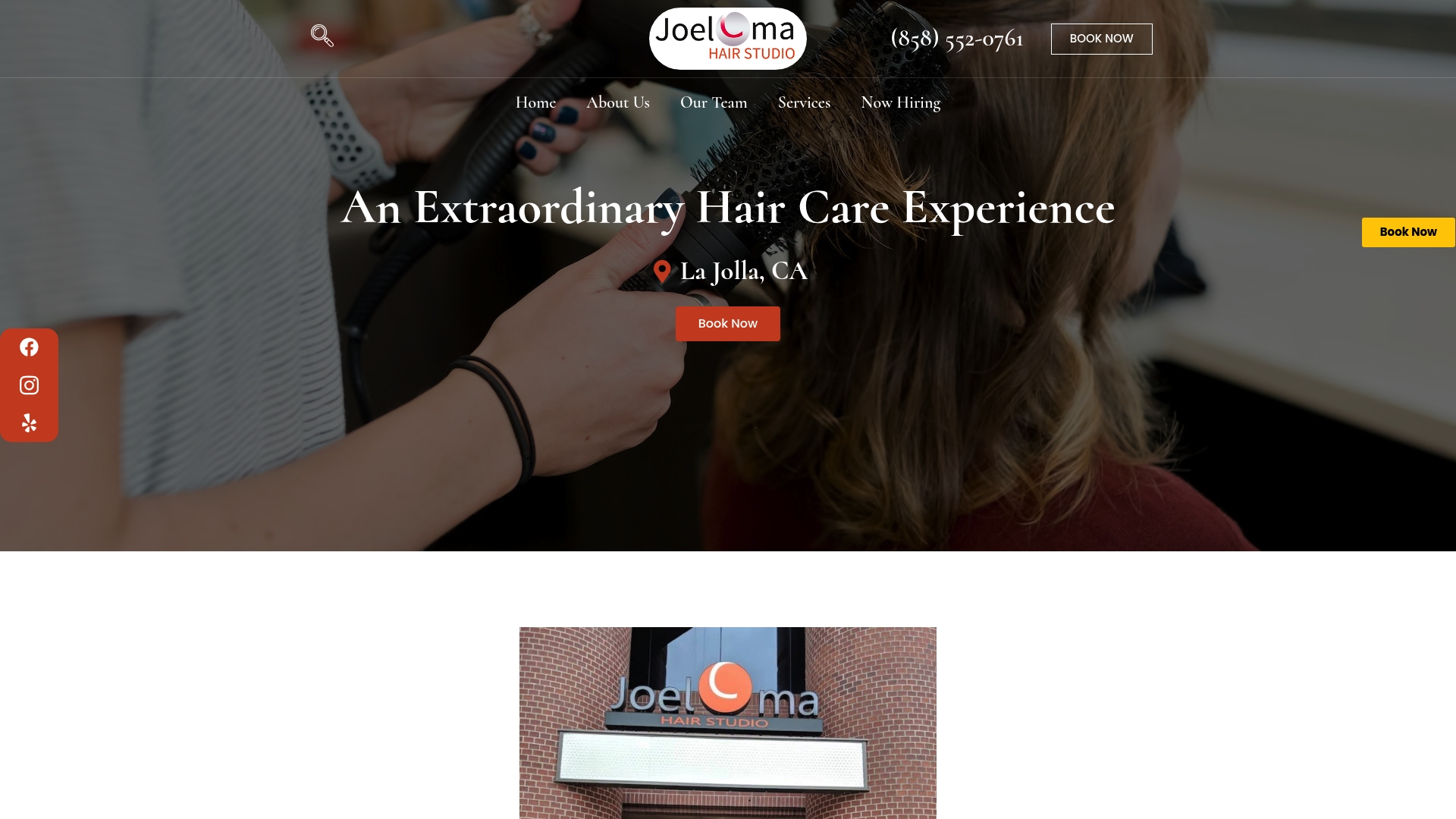
Instead of facing these challenges alone, let our accomplished team apply over 25 years of experience to your unique goals. Whether you need advanced scalp analysis, a custom hydration regimen, or cutting-edge hair artistry, our La Jolla salon is ready to deliver a luxurious, safe, and truly transformative experience. Explore more expert advice and styling options in our Uncategorized Archives or secure your personalized consultation through Joel C Ma Hair Studio today. Your healthiest, most beautiful hair starts right now—book your appointment with us and see the extraordinary results yourself.
Frequently Asked Questions
How can I assess my current hair health?
Start by visually inspecting your hair in good lighting and checking for split ends, dryness, and unusual texture. Additionally, perform a gentle wash test to count how many hairs fall out during and after shampooing, which should typically be between 50-100 hairs.
What types of products should I choose to prevent hair damage?
Opt for gentle, nourishing products that contain natural ingredients like aloe vera and coconut oil, avoiding harsh sulfates and alcohol. Read labels carefully and focus on products labeled as “moisture-rich” or “nourishing” to protect your hair’s health.
What are effective protective styling habits to adopt?
Use protective styles such as braids, twists, or locs to shield your hair from environmental stressors while keeping tension low on your scalp. Rotate your protective styles every 4 to 6 weeks to allow your hair to rest and recover from tension.
How can I limit heat and chemical exposure to my hair?
Reduce heat styling by air drying your hair whenever possible and using heat tools no more than 1-2 times per week. Always apply a heat protectant when you do use these tools and keep temperature settings below 375 degrees Fahrenheit to minimize damage.
When should I schedule salon checks for my hair health?
Plan to have professional salon checks every three to four months to assess your hair’s condition accurately. During these visits, discuss your hair care routine and bring photos to track progress and receive tailored recommendations.
How do I track the progress of my hair health effectively?
Take clear close-up photos of your hair and scalp before each salon visit to create a personal progress portfolio. This visual record will help you and your stylist compare changes and adjust your hair care strategies over time.
Recommended
- Understanding the Signs of Unhealthy Hair for Luxurious Styles – Joel C Ma Hair Studio
- Understanding Healthy Hair Habits for Luxurious Locks – Joel C Ma Hair Studio
- Master Daily Hair Care Routines for Luxurious Styles – Joel C Ma Hair Studio
- Hair Health Essentials 2025: Luxury Tips for La Jolla – Joel C Ma Hair Studio


